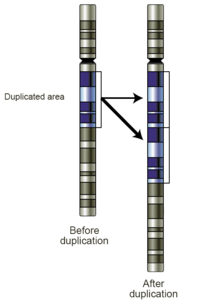
Photo from wikipedia
The past twenty-five years significantly expanded our knowledge of Copy Number Variants (CNVs), genomic imbalances belonging to structural genetic variations, and their role in both human health and disease, particularly… Click to show full abstract
The past twenty-five years significantly expanded our knowledge of Copy Number Variants (CNVs), genomic imbalances belonging to structural genetic variations, and their role in both human health and disease, particularly in the neurological field. In 1991, Lupski was the first to associate a CNV (a DNA duplication) to a human autosomal dominant neurodegenerative disease, the Charcot-Marie-Tooth Disease Type 1A [1]. In the last years, different technologies succeeded one another, increasing the power of resolution and the regions of application. However, technological and conceptual barriers have hampered the investigation of neurodegenerative diseases from a polygenic point of view, not only for complex neurodegenerative diseases but also for monogenic ones. For example, even if Neurofibromatosis type 1 represents a monogenic autosomal dominant disorder with complete penetrance, it is characterized by a variable expressivity that is hard to address in a genotype-phenotype correlation [2, 3].
Journal Title: Current Genomics
Year Published: 2018
Link to full text (if available)
Share on Social Media: Sign Up to like & get
recommendations!